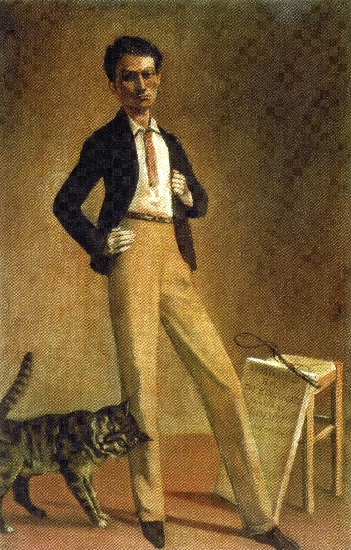In 1984, on the occasion of his retrospective at the
At least Nicholas Fox Weber, author of Balthus: A Biography, cannot be accused of pandering to his subject. In this remarkable book (too often remarkable, it must be said, in ways that its author is unlikely to have intended) Fox Weber takes a determinedly forensic view of Balthus’s work. He treats almost every one of the artist’s pictures as the scene of a crime, tangible evidence of Balthus’s seething perversion. Despite the artist’s refusal to cooperate with his biographer’s attempts to get inside his head (or perhaps because of it) his works are considered as so much psychic evidence. It is an approach which could not be more perfectly calculated to infuriate the painter.
Exhibit A is The Guitar Lesson, of 1934, perhaps the most memorably unpleasant work painted by the artist during the years when his work reflected the influence of Surrealism. The industrious biographer tracks this rarely seen image of a sado-masochistic sexual encounter between a music teacher and her hapless but unresisting pupil to the New...


